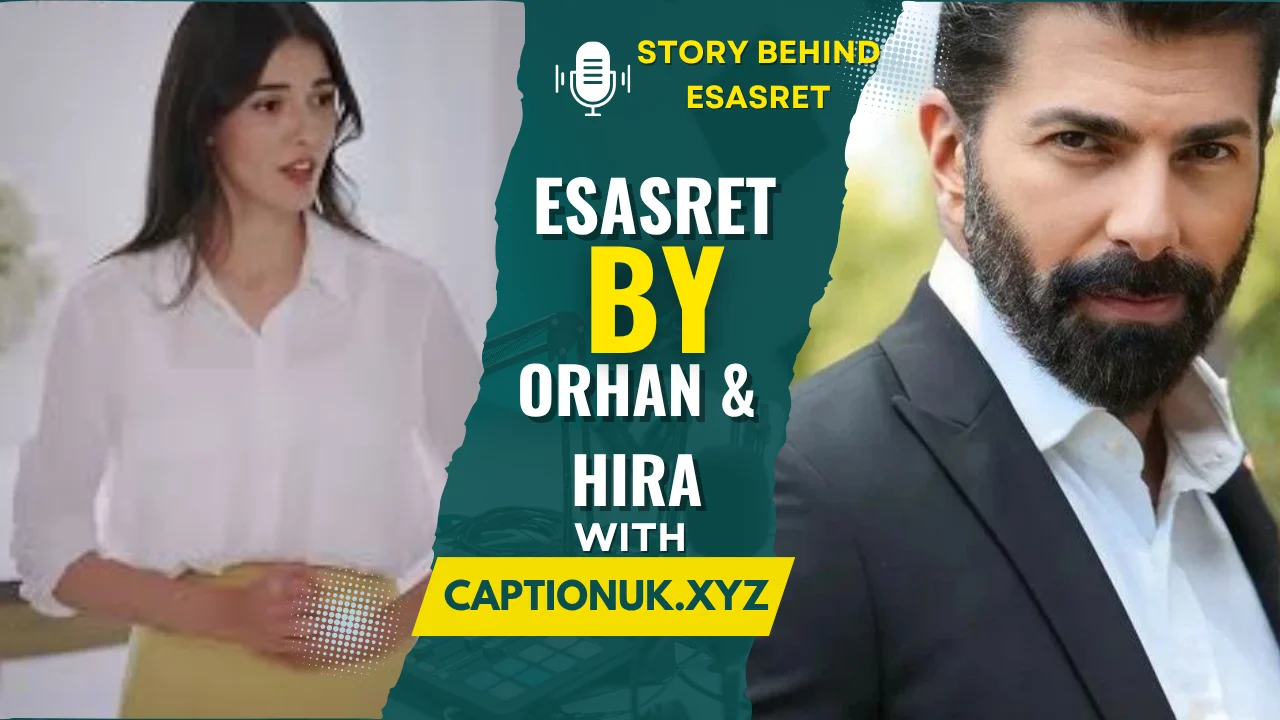The Story Behind Esasret by Orhan & Hira
You’ve probably heard Esasret by Orhan & Hira. It’s been echoing across playlists and social media. But behind that melody lies a story that runs deep — one of love, longing, and quiet heartbreak.
What Does “Esasret” Mean?
“Esasret” means captivity in Turkish. The word carries the weight of being bound by emotions — usually love or memory. The song uses it as a symbol of emotional confinement, where someone’s heart is trapped in the past.
This meaning sets the stage for everything Orhan & Hira express. The lyrics, melody, and tone all pull from that feeling of emotional imprisonment. It’s not about physical chains; it’s about the heart that won’t move on.
Who Are Orhan & Hira?

Orhan and Hira are two Turkish musicians who built their following through honest storytelling. They don’t rely on flash or trends. Instead, they focus on emotion.
Their voices carry a natural balance — Orhan’s tone feels grounded, while Hira’s voice brings warmth and softness. Together, they form a harmony that feels personal and close, like someone whispering their pain to a friend.
How Esasret Came to Life
The song Esasret was written during a time of emotional struggle for Orhan. He had lost someone important, and he couldn’t express the emptiness he felt in words. Music became his outlet.
Hira joined the process soon after. She helped shape the song’s rhythm and tone, turning it into a duet that tells two sides of the same story — one person who can’t forget, and another who quietly watches from afar.
They spent months perfecting it, not chasing perfection in sound, but in feeling. The final track captures that ache — slow, steady, and sincere.
The Meaning Behind the Lyrics
The lyrics describe the pain of love that never fades. The verses speak of waiting, of promises that never came true, and of memories that won’t stop replaying.
Each line carries a quiet rhythm, as if each word is a breath taken between tears. Hira’s voice brings the emotion to life, while Orhan’s tone keeps it grounded in reality.
The chorus repeats the word “Esasret”, making it sound almost like a heartbeat — slow, tired, and heavy. It’s not about the end of love, but about living with what’s left behind.
The Music Composition
The composition of Esasret uses a blend of traditional and modern Turkish music elements. Soft strings and slow percussion guide the listener through the emotional tone.
You can hear echoes of classical Turkish ballads mixed with subtle electronic notes. The melody isn’t rushed; it unfolds like a story told late at night.
This mix helps it appeal to both young and older listeners. It feels new yet familiar — something people can relate to, no matter their age.
Why Esasret Feels So Personal
The magic of Esasret lies in its honesty. The song doesn’t hide behind metaphors. It speaks plainly about emotions most people try to bury.
Listeners often say they feel like the song was written for them. That’s because Orhan & Hira focus on real experiences, not imagination. They don’t try to impress; they try to connect.
When Hira’s voice breaks slightly in the bridge, it’s not an accident — it’s emotion. That’s what makes it stay with you long after it ends.
The Visual Side of the Song
The music video for Esasret mirrors the song’s tone quiet, simple, and full of feeling. It’s set in dim light, symbolizing memory and loss. There’s no overacting, no grand gestures. Just presence and silence.
The video doesn’t distract from the song; it supports it. Every scene matches a lyric. The shadows, the pauses, even the slow camera movements all mirror the rhythm of the heart behind the story.
Audience Response and Impact
Since its release, Esasret has gained millions of views online. People from across different countries share it for one reason it feels real.
The song’s reach shows how emotions cross language barriers. You don’t have to understand Turkish to feel what it means. The melody alone carries the story.
Data from streaming platforms can show how far it’s spread. For example, if Spotify statistics show that Esasret has over 5 million plays in the first month, that’s proof of how deeply it connects.
Behind the Scenes: How Orhan & Hira Work Together
Orhan & Hira’s process is simple but focused. They start with a feeling, not a plan. Orhan often writes a melody first, then Hira adds her touch shaping the emotion into sound.
They record together, often redoing takes until the feeling feels right. Not perfect, but real. They’ve said in interviews that their goal isn’t fame, but honesty.
The Message Behind Esasret
At its heart, Esasret tells us that love doesn’t always free us. Sometimes it keeps us tied to moments long gone.
That message isn’t sad — it’s human. The song reminds listeners that even pain has beauty. It shows how memory can hurt, but also how it keeps love alive in its own quiet way.
What Makes Esasret Stand Out
The song’s simplicity is its strength. There’s no heavy production or digital effects stealing attention. Everything centers on feeling.
Orhan & Hira created something that sounds personal, like a private moment caught on tape. It’s not made to impress, but to connect.
People listen to it during quiet nights, long drives, or when they miss someone. That emotional honesty keeps the song alive long after trends fade.
Conclusion
Esasret by Orhan & Hira isn’t just a song it’s a shared moment of feeling between artist and listener. It captures the quiet side of love, where memory lives and the heart still listens.
Its power lies in its simplicity. Through honest lyrics and soft melodies, it touches something universal — the part of us that still waits, still remembers, and still feels.
FAQs
1. What does “Esasret” mean in English?
“Esasret” means captivity or emotional imprisonment. It refers to the feeling of being trapped by love or memory. The song uses it to express being unable to move on from someone you once loved deeply.
2. Who wrote Esasret?
Orhan wrote the first version of the song, and Hira helped shape it into a duet. They worked together on both lyrics and melody, giving it balance and emotional depth.
3. When was Esasret released?
It was released in early 2025. The release followed several months of writing and studio recording, aiming to preserve the natural feeling of the original draft.
4. What genre is Esasret?
The song blends Turkish pop and soft ballad styles. It combines traditional Turkish melody patterns with light modern production, making it both emotional and accessible.
5. Why is Esasret so popular?
Because it’s honest and relatable. The song speaks about emotions many people hide — love, loss, and longing. Its simplicity allows anyone to connect with it, even across languages.
(Final note for visuals: End with a short embedded video of Orhan & Hira performing Esasret live or a link to the official music video. Add social share buttons under it for readers to spread the post.)


